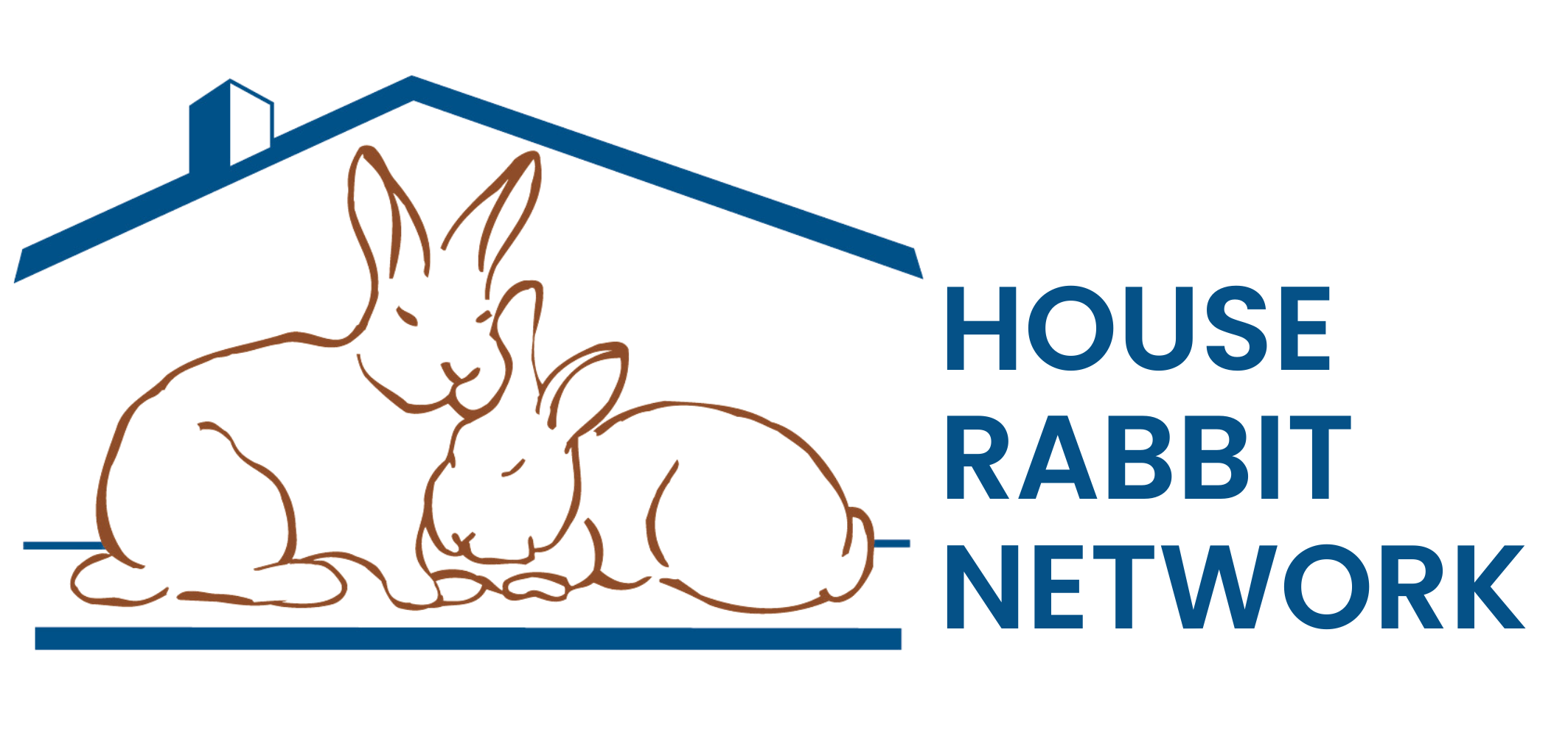Understanding Rabbit Behavior
by A.A.
For anyone new to the wonderful world of bunnies, you may sometimes wonder, “What on Earth is that bunny doing?” Here are common bunny behaviors decoded.
Loafing: Bunnies will often sit with all four legs folded under them so that they resemble a meatloaf or loaf of bread, hence the term loafing. Bunnies do this when relaxing.
Flopping: A rabbit will go from sitting or standing to suddenly flopping down on one side (sometimes with a mild thud) and being still. People become alarmed by this, thinking that the bunny has become suddenly ill but f lopping is perfectly normal behavior. Often, bunnies are instantly asleep after flopping which is why they appear to have stopped moving.
Superbun: If you’ve ever seen a bunny with legs stretched out in a pose that looks like Superman flying through the sky, you’ve seen the superbun. This is a common relaxed bun pose and the further apart the back legs are, the more relaxed the bunny is.
Melting: This is similar to the superbun but takes it one step further. Bunnies flatten to the floor completely so that their whole bodies, including the neck and chin, are touching the floor as if they have no bones. This is a highly-relaxed state for a bunny.
Binkies: A fun rabbit behavior to observe is the binky, which is when bunnies leap into the air and spin, kick, and/or twist their bodies as if they’re dancing. The binky is said to be an expression of great happiness; it’s a literal jump for joy.
Zooms/The Bunny 500: When bunnies get very excited and have a lot of energy, they race around at full speed, which is why it’s important to give them room to zoom. Zooming is often followed by binkies.
Digging/Chewing: House rabbits often obsessively dig and chew anything they come across, especially anything made of wood. In the wild, rabbits dig networks of underground tunnels and chew through stems and roots. These are instinctual behaviors so rather than trying to stop them, give them approved materials, such as grass mats, apple sticks, and wooden toys. For those who are handy, you can also build your own cardboard fort or wooden bunny toys.
Chinning: You may notice your bunny rubbing her chin on things, such as toys, food, furniture, and even her humans. This is called chinning and it’s how rabbits mark their territory. There are scent glands in their chins (the scent is not detectable to people) that let other rabbits know “this is mine.”
Purring: Like cats, rabbits purr when content but the sound is produced differently. Rabbits rapidly chatter their teeth to purr. If your bunny purrs while being petted, you’re doing a good job and your bun is happy to be spending time with you. A slow grind of the teeth can mean your rabbit is in pain, especially if the bun is sitting in an awkward position.
The Butt: When bunnies are upset, they’ll turn their backs on you and refuse to acknowledge your existence. This is known as “giving the butt” and it happens during stressful situations, which can range from being brushed to being put into a pet carrier. Lucky for humans, buns forgive easily. A treat or some snuggles usually makes them your friend again. Sometimes they just need a little time alone.
Thumping: Unlike how it’s portrayed in movies, rabbits don’t thump for fun. The thump is a warning to other rabbits that there’s danger close by. Thumps vary in intensity; the louder the thump, the more frightened or alert the bunny is. At home, rabbits can thump for seemingly no reason, but they’re most likely smelling something humans either can’t detect or don’t see as a threat. If you hear repeated thumping but there’s no danger to your bun, it can help to go to your rabbit and comfort her. Rabbits also thump when they’re angry or mad.
Nose Bonk: People who have brought a bun into their home will soon start to experience the “nose bonk.” As rabbits pass by, they’ll nudge their humans or other buns with their noses. This is often a greeting. However, if you’re blocking your bun’s path, nose bonks can mean, “Get out of my way!” They may nose you a few times and then nip you if you don’t move.
Periscoping: When a bunny stands on her hind legs and looks around, it’s called periscoping. They do this to get a better look at what’s going on around them.
Licking: Rabbits groom each other by licking and it’s a sign that they have a strong bond to each other. If your bunny licks you, she feels affection for you. Once you understand bunny behavior, you can communicate more effectively with them.
